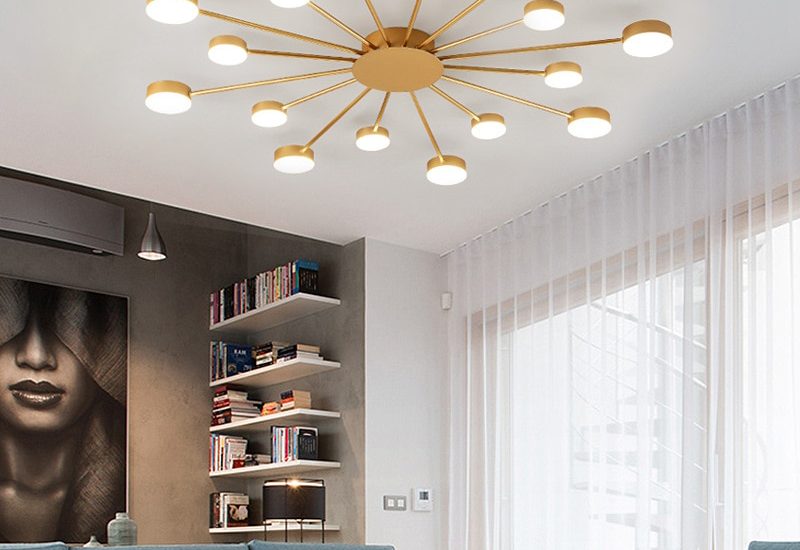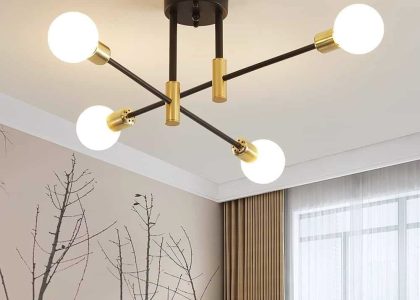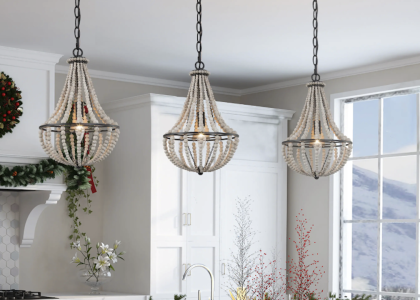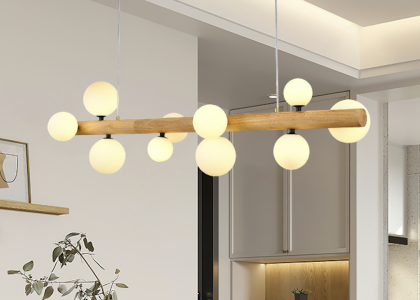The invention of electric lights revolutionized the way humans have been able to see and experience the world at night. With new modern lights, the power of illumination has reached new heights, triggering new possibilities and unlocking new potentials. From homes to streets, from artworks to highways, from museums to stadiums, modern lights have become ubiquitous, and they continue to shape the way we perceive, interact, and thrive in the built environment.
The Evolution of Lights
The history of lights dates back to ancient times, when humans used torches, candles, and other burning materials to create light. The first electric light was invented in 1802 by Humphry Davy, but it was only in the late 19th century that electric lights became practical for widespread use. Since then, the evolution of lights has been remarkable, with new technologies and materials enhancing their performance, efficiency, and cost-effectiveness.
Types of Modern Lights
There are several types of modern lights, each with specific characteristics and applications. Some of the most common ones are:
- LED Lights: Light Emitting Diodes (LEDs) are the most popular type of modern lights. They are energy-efficient, long-lasting, and versatile, and can be used for a wide range of purposes, from decoration to illumination.
- CFL Lights: Compact Fluorescent Lights (CFLs) are another type of energy-efficient modern lights, suitable for indoor and outdoor use.
- Halogen Lights: Halogen lights are known for their brightness and clarity, and are often used in high-end applications, such as photography, cinematography, and stage lighting.
- Infrared Lights: Infrared lights are not visible to the naked eye, but they can be used for security, surveillance, and remote control applications.
Advantages of Modern Lights
Modern lights have several advantages over traditional lights, such as:
- Energy Efficiency: Modern lights consume less energy than traditional lights, leading to lower electricity bills and reduced carbon footprint.
- Longevity: Modern lights last longer than traditional lights, meaning less frequent replacements and maintenance.
- Safety: Modern lights emit less heat and UV rays than traditional lights, making them safer for users and the environment.
- Customization: Modern lights can be easily customized to fit specific needs, from color temperature to brightness levels.
Applications of New Modern Lights
New modern lights are being used in a wide range of applications, from residential to public spaces. Some of the most innovative applications are:
Smart Lighting Systems
Smart lighting systems use sensors, algorithms, and cloud-based platforms to optimize lighting performance, reduce energy consumption, and improve user experience. They can be programmed to adjust brightness, color, and intensity according to the time of day, weather conditions, and user preferences. Smart lighting systems are being used in homes, offices, factories, and public spaces, such as airports, hospitals, and stadiums.
Artificial Lighting for Plants
Artificial lighting for plants is becoming increasingly popular, especially in urban areas where natural light is scarce. New modern lights are being used to simulate natural sunlight, providing plants with the spectrum and intensity of light they need to grow and thrive. This technology is being used in indoor farming, vertical farming, and urban agriculture.
Laser-Based Lighting
Laser-based lighting is a new technology that uses lasers instead of LEDs or halogen lights to create illumination. Laser-based lights are known for their brightness, clarity, and precision, and are being used in applications such as outdoor displays, concerts, and architectural lighting.
New modern lights are changing the way we see the world, making it brighter, safer, and more efficient. From smart lighting systems to laser-based lighting, the possibilities of modern lights are infinite, and the future is only getting brighter. As we continue to evolve and innovate in the lighting industry, we can expect new technologies and materials to emerge, unlocking new potentials and creating new opportunities for growth and progress.






